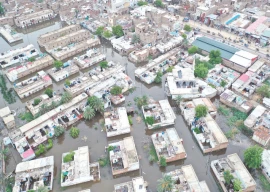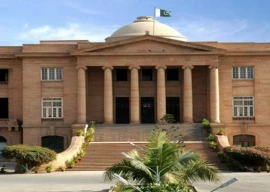
The protection of livelihoods and indigenous lifestyles of the communities residing in rural Karachi can be cited as one such urgent challenge. This is urgent in view of the uncontrolled urban sprawl in the city.
Karachi’s urbanised settlements and its rural hinterland, though distinct in their socio-economic, administrative and environmental profiles, are linked inextricably by history and geography and can very effectively supplement the city’s sustainable growth as they can provide food security and act as a barrier to uncontrolled urbanisation.
The consequences of urban sprawl can be seen in the rapidly diminishing natural supportive resources such as water and fertile soil, which in turn threaten the agro-livestock based livelihoods, residential security and cultural uniqueness of Karachi’s oldest inhabitants.
Historically, Karachi has been a conglomeration of neighbourhoods - villages or goths - that included not only the ancient villages of Jokhios, Memons and Mir Bahars on the fringes of the old town, but also the picturesque and characteristic neighbourhoods of Silwats who lived in the central area of the city. The Silwats had migrated centuries ago from Jaisalmer in Rajasthan (now part of modern-day India) to live in the capital of Sindh.
Karachi’s goths can be categorised into rural, coastal and ‘urbanised’. Sindhi and Balochi speaking communities that still inhabit most of these goths have also historically been the dominant ethnicities yielding influence in the region. Karachi lies at the foothill of the Khirthar range of hills and is not part of the Indus delta. It constitutes part of the territories of the chieftains who controlled the Hub Malir region and the Makran coast. This region, though part of Balochistan, has been a Sindhi-speaking area right up to the ‘Jamdom’ of Lasbella, the most important regional chiefdom. In the seventeenth century, the region was in control of the Kalmati Maliks who had dominated the area perhaps since the thirteenth century.
According to the findings of the study - Informal Sector Housing Study of goths in Karachi, 1990, by Abdul Hamid Shaikh, in the early periods, the settlements in Karachi were mostly characterised by fishing villages. A British commander, Carless, who was deputed with the task of surveying the coast of Karachi in the 18th century, wrote that the population of Karachi largely consisted of seamen and fishermen - the total population nearly 14,000. The British surveyed the goths of Karachi in 1885 that were progressively converted into grazing land and then agricultural land through cultivation due to the increasing demand for vegetables and fruits in the market.
Speaking about the existential threat faced by the rural Karachi’s inhabitants, it can best be qualified as a threat to its land use. The agriculture and grazing-based land use and its associated economy and culture are now being altered at an alarming pace through unplanned urbanisation. With the change in land use, the overall cultural, socio-economic and financial profile of the area is being transformed and distorted beyond recognition.
Here arises the need to create private-sector linkages for assistance and investment in setting up agricultural support services and infrastructure - more employment opportunities for youth and create a financial incentive to sustain the agro-urban economy and its associated livelihoods. Before this is possible, however, it is important to declare that the land in these outskirts of the city will be used for agricultural purposes only. It is also important to invest in the protection and sustenance of the valuable resources such as water and land.
The writer is an urban planner and runs a non-profit organisation based in Karachi city focusing on urban sustainability issues. He can be reached at fanwar@sustainableinitiatives.org.pk
Published in The Express Tribune, February 10th, 2014.


















COMMENTS
Comments are moderated and generally will be posted if they are on-topic and not abusive.
For more information, please see our Comments FAQ